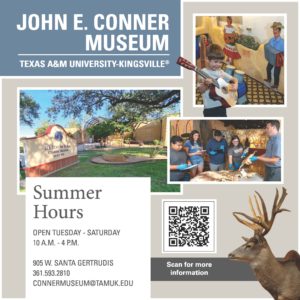Classes being relocated again
In early September, the Department of Art, Communications and Theatre (ACT) responded to ongoing mold and air conditioning problems affecting the Drama/Arts building by relocating students and faculty to nearby classrooms to continue their classes and work efficiently in an environment uninhabited by mold.
Many students, specifically art, were affected by the mold, with health being a major concern while working in their art studio. As a result, the art students were relocated to the vacant Bellamah Music Building to continue their classes and create art.
Recently, students were notified they would need to relocate back to the Drama/Arts building because Bellamah will soon be rented to Santa Gertrudis ISD.
An agreement was signed between the university and the academy which was approved by the University Space Committee.
If for some reason there are delays with the completion of the Drama/Arts building, the university and department will not move students to another location. Instead, they will make the necessary adjustments and arrangements with Santa Gertrudis ISD and the move will still take place once the Drama/Arts building is completely ready and safe for students to return.
“We will not place any student, faculty or staff into the unsafe space,” College of Arts & Sciences Dean Dolores Guerrero said.
Because the Drama/Arts building did not have a functioning climate control system at the beginning of the Fall 2021 semester, it was in the best interest of the students and faculty that lectures be temporarily relocated and faculty offices moved until the situation could be resolved.
“The initial move was coordinated with the university due to AC issues with the Drama/Arts building,” Guerrero said.
Before the move back into the building, air samples are planned to be taken.
The current plan is to have materials and equipment moved out of Bellamah by March 15, when students return from spring break, moving students back into the Drama/Arts building they were once moved out of due to an ongoing mold crisis the university hopes to resolve by this time.
Some students expressed concern about making the move.
“To move us back into a building that still has much work to undergo, is highly unprofessional. Not only did we have to move out of our building due to the mold and no AC for the first four weeks of school, but we had many classes actually spend their class time moving over desks, tables, materials, etc. To move back is going to be another big hassle for sure,” senior art major Bryson Olivarez said.
The university is addressing the issues with the mold as part of the continuing work that is being done to the Drama/Arts building to have it ready for students to effectively work there again.
“The process is about 35 percent complete and should be completed in March, barring supply chain disruptions,” Marketing and Communications Director Adriana Garza said.
Last July, TAMUK encountered issues with chillers on the east side of campus, resulting in humid classrooms in the Drama/Arts building. A rental chiller was put in place to help cool the facility while students and faculty were relocated.
During this time, the university has moved forward with upgrading the AC unit along with other solutions to fix the problem, such as piping and ducting.
Students, faculty and staff will be relocated to the building only if it is deemed safe for return.
The department chairman Todd Lucas completed a walk through in mid-December with Construction Project Manager Juan Contreras, to begin an action list of items to be completed to create a safe environment for faculty and students to return to Drama/Arts. The art faculty was made aware of the new move date on Jan. 4 when Lucas sent out an email.
“As far as the other students go, I know we all really loved having our own storage spaces and space overall to let our creativity go wild and be more ambitious with our projects as we had more space to work,” Olivarez said of working in Bellamah. “The humidity and mold will play a role in the quality of our work. Not only do we have to be more aware of what we are leaving in the building, but also the materials we use now will have to be durable enough to not be affected by the high humidity levels in the building.”

